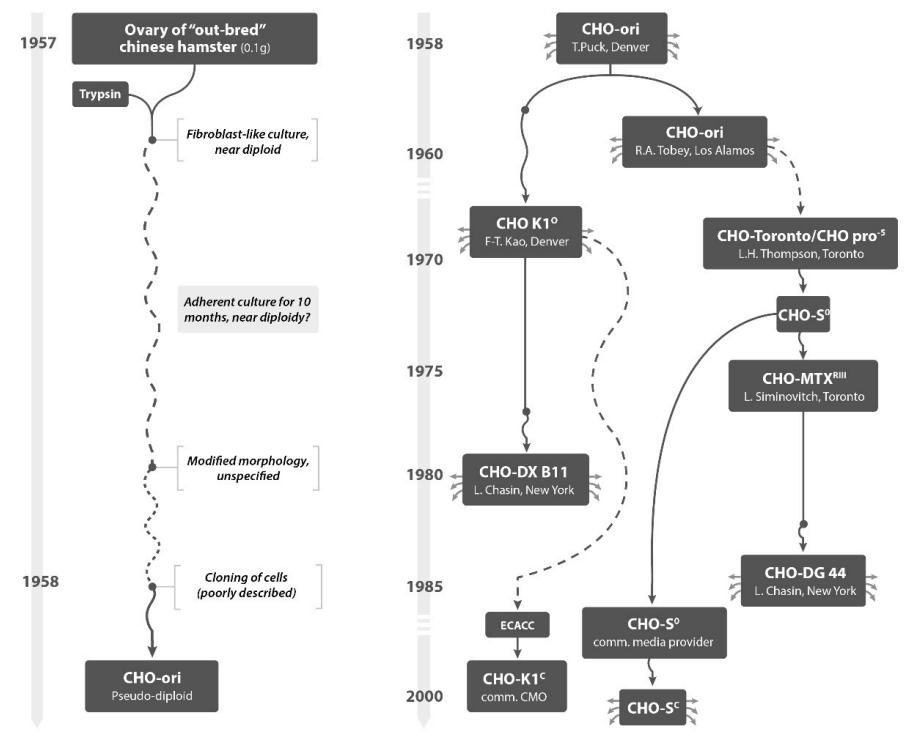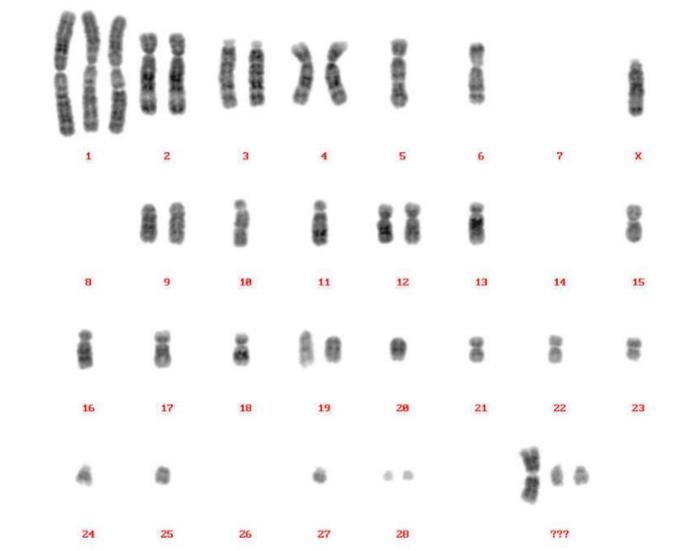Chinese hamster ovary (CHO) cells are the predominant host cell type used in the production of recombinant therapeutic proteins. They are chosen as hosts, because of their ability to create, fold and modify proteins in a manner that makes them compatible with the human immune system. However, CHO cell line genetic instability can affect cell culture phenotypes such as cell growth, productivity, or product quality and remain challenges for biopharmaceutical manufacturing.
Karyotype analysis (G-Banded analysis) is a test to examine chromosomes in cells. If CHO cells or limiting-diluted subclones exhibit a karyotypically heterogeneous population, it will suggest that chromosomal rearrangements occur spontaneously and frequently in these cells. Karyotype analysis (G-Banded analysis) can indicate that CHO cells, as well as limiting-diluted subclones, exhibit a karyotypically heterogeneous population, suggesting that chromosomal rearrangements occur spontaneously and frequently even in non-engineered host cells. Therefore, this technique is evaluated as a standard and the most common tool for the detection of instability in cell line development processes.
Here, due to the challenges posted by genetic instability of CHO cells, Creative Bioarray has established CHO Cell Chromosomal Aberration Analysis to fast-track your stable cell line genetic stability and accelerate subsequent Investigational New Drug (IND) review.
 Figure 1. Origin, names, and constructed history of industrially relevant CHO cell lines.
Figure 1. Origin, names, and constructed history of industrially relevant CHO cell lines.
 Figure 2. CHO Karyotype generated from CHO cultured cells (:37,X,+1,-5,-6,-7x2,-8x2,-10,-11,-13,-14x2,-15,-16,-17,-18,-20,-21,-22,-23,-24,-25,-26x 2,-27,+3mar)
Figure 2. CHO Karyotype generated from CHO cultured cells (:37,X,+1,-5,-6,-7x2,-8x2,-10,-11,-13,-14x2,-15,-16,-17,-18,-20,-21,-22,-23,-24,-25,-26x 2,-27,+3mar)
Our Service Features:
Creative Bioarray's CHO Cell Chromosomal Aberration Analysis has the following features:
- Metaphase nuclei harvest and chromosome count.
- Chromosomal abnormality quantification.
- Counting: 30-40 cells, and microscope analysis of 20 metaphase spreads.
- Standard cytogenetic analysis can be customized to your need.
Quotation and ordering
Our customer service representatives are available 24 hours a day! We thank you for considering Creative Bioarray as your CHO Cell Chromosomal Aberration Analysis partner.
References
- Frye, C.; Deshpande, R.; Estes, S.; Francissen, K.; Joly, J.; Lubiniecki, A.; Munro, T.; Russel, R.; Wang, T.; Anderson, K. Industry view on the relative importance of "clonality" of biopharmaceutical-producing cell lines. Biologicals 2016, 44, 117–122.
- Puck, T.T. The genetics of somatic mammalian cells. Adv. Biol. Med. Phys. 1957, 5, 75–101.
- Puck, T.T. Development of the Chinese Hamster Ovary (CHO) Cell for Use in Somatic Cell Genetics. In Molecular Cell Genetics; Gottesman, M.M., Ed.; John Wiley and Sons: New York, NY, USA, 1985; pp. 37–64.
- Gottesman, M.M. Mammalian Cell Genetics; John Wiley and Sons: New York, NY, USA, 1985.
- Deaven, L.L.; Peterson, D.F. The Chromosomes of CHO, an Aneuploid Chinese Hamster Cell Line: G-Band, C-Band and Autoradiographic Analyses. Chromosoma 1973, 41, 129–144.
- Worton, R.G. Karyotypic heterogeneity in CHO cell lines. Cytogenet. Cell Genet. 1978, 21, 105–110.


 Figure 1. Origin, names, and constructed history of industrially relevant CHO cell lines.
Figure 1. Origin, names, and constructed history of industrially relevant CHO cell lines. Figure 2. CHO Karyotype generated from CHO cultured cells (:37,X,+1,-5,-6,-7x2,-8x2,-10,-11,-13,-14x2,-15,-16,-17,-18,-20,-21,-22,-23,-24,-25,-26x 2,-27,+3mar)
Figure 2. CHO Karyotype generated from CHO cultured cells (:37,X,+1,-5,-6,-7x2,-8x2,-10,-11,-13,-14x2,-15,-16,-17,-18,-20,-21,-22,-23,-24,-25,-26x 2,-27,+3mar)


